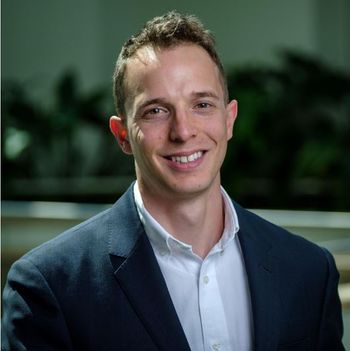
Sports Med Group: Providers Should Help Patients Be More Physically Active
Some patients may not even understand exactly what is meant by "exercise." How do you promote physical activity in your practice?
Activists push three federal physical activity bills
WASHINGTON -- An American College of Sports Medicine (ACSM) "roadmap" to increasing physical activity participation calls for providers to engage more with patients about their lifestyles, while former pro athletes and sports industry lobbyists exhibited another roadmap facet by advocating for three bills on Capitol Hill Wednesday.
Practitioners, athletes, and other activists are pushing solutions to make more Americans physically active, especially chronically inactive and less active populations. The ACSM guidelines,
- Spreading awareness of health inequities and physical activity's role in addressing them
- Educating providers and fitness professionals about cultural competency and health barriers, and developing new community programs
- Collaborating across industries including healthcare, education, and sports and fitness
- Evaluating their progress and compiling a best practices database
"It's going to take a large push," said the first author of the document, Rebecca Hasson, PhD, a kinesiology professor at the University of Michigan School of Public Health. “There are still a lot of barriers ... that prohibit people from being physically active on a regular basis.”
The authors worked with ACSM's
(“Is exercise even a piece of the conversation they're having with patients?” Hasson wondered.)
Providers should also consider the patient's home and work environment, what physical activities they enjoy, and recommending mobile fitness trackers to help motivate patients, she added: "It's a little difficult. With physical activity, you are actually adding that into somebody's life."
Only one in five Americans meet the recommended daily physical activity guidelines, the ACSM reported. It therefore convened a group including the Robert Wood Johnson Foundation, the National Medical Association, and the U.S. Department of Health and Human Services to meet in Washington, D.C., in 2012 and start developing the roadmap. The group considered inactivity factors in the workplace, schools, and communities, studying how to incorporate activity into the school day and whether people feel safe enough to walk in their neighborhoods, for example.
ACSM called physical activity behavior "socially patterned," noting lower participation among:
- women
- racial/ethnic minorities
- LGBTQ youth
- individuals who have less education
- those with physical, mental, and cognitive disabilities
- those older than 65
- those living in the southeast
“Many health-related outcomes follow a similar pattern with a higher disease burden reported in racial/ethnic minorities, individuals with less education, persons with disabilities, and those living in the southeast," the authors wrote, "suggesting lack of regular physical activity may be associated with these outcomes and/or health-related behaviors that lead to these outcomes.”
The authors also called promoting physical activity "one of the least expensive and most effective preventive treatments for combating the increasing problem of chronic diseases and may represent the most effective strategy to eliminate inequities in health status."
10% of Adolescents Inactive
In addition, more than 10% of adolescents are inactive, according to the ACSM and the
Sells spoke Wednesday at an association briefing before the athletes and other activists met with lawmakers to advocate for:
- Passing the
PHIT (Personal Health Investment Today) Act, allowing Americans a medical care tax deduction on physical activity spending - Fully funding ($1.6 billion) Title IV of the
Every Student Succeeds Act , which fundsschool health and fitness - Reviewing, updating, and promoting guidelines
issued in 2008 via thePhysical Activities Recommendations for Americans Act
“We have so much work to do,” SFIA president Tom Cove said.
“There should be no barriers to entry," said Roman Oben, the National Football League's youth director and a former NFL player, in between Congressional meetings. Physical activity has "got to be pushed.”
The activists face resistance, they acknowledged. President Trump's proposed budget would lead to major cuts in physical education spending, Sells said. And the
“It's going to take a while, Hasson said. “If we're at 20% [total participation] now, we're probably not going to turn around and see we're at 75% in 5 years, but I do think we have the opportunity to shape policy and shape law that will create healthy environments.”
Primary Source: Medicine & Science in Sports & Exercise
This article was first published on
Newsletter
Enhance your clinical practice with the Patient Care newsletter, offering the latest evidence-based guidelines, diagnostic insights, and treatment strategies for primary care physicians.






















































































































































































































































































